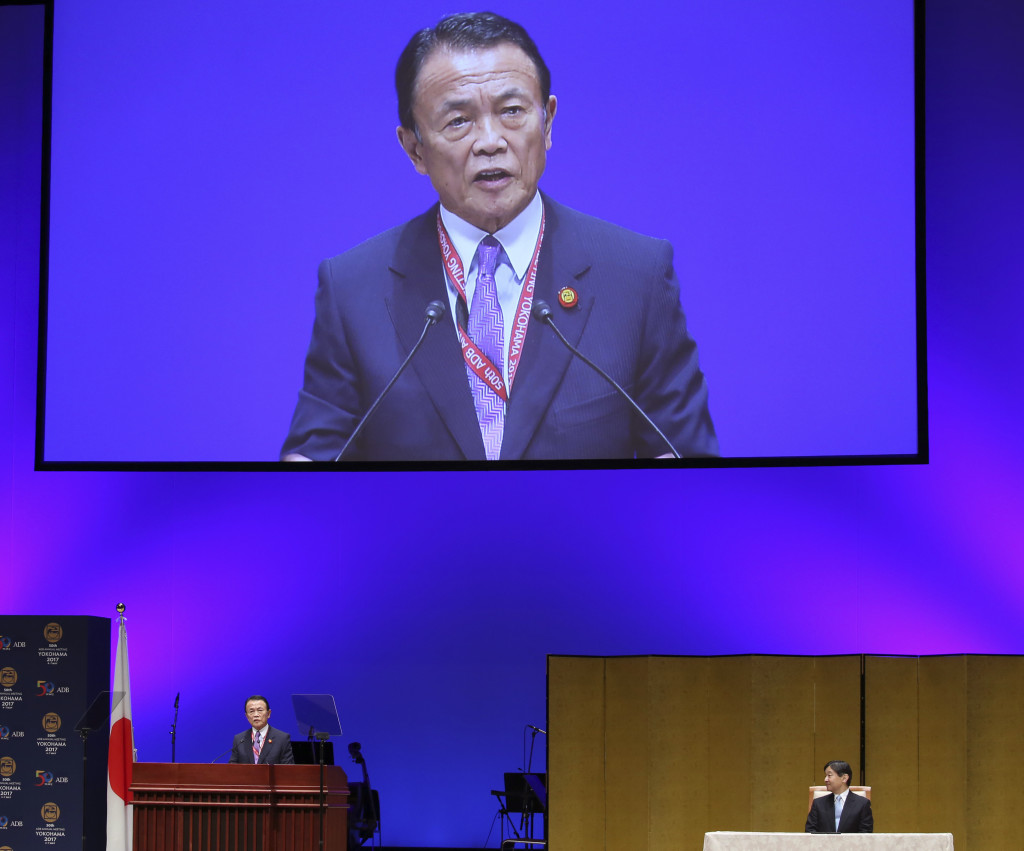
Japanese Finance Minister Taro Aso, left, delivers a speech as Japanese Crown Prince Naruhito listens during the opening session of the Asian Development Bank board of governors in Yokohama, Saturday, May 6, 2017. Investments should concentrate on high-quality projects to promote development that make technology available to all as the region stretches to make up for a shortfall in needed spending, the ADB’s president and other leaders said Saturday. Aso said Japan, the biggest donor to the ADB, would contribute $40 million to a fund promote use of high technology. (AP Photo/Koji Sasahara)
YOKOHAMA, Japan — Investments should concentrate on high-quality projects to promote development that make technology available to all as the region stretches to make up for a shortfall in needed spending, the Asian Development Bank’s president and other leaders said Saturday.
The bank is marking its 50th year at an annual meeting in the port city of Yokohama.
Opening the meeting of the bank’s board of governors, Finance Minister Taro Aso said Japan, the biggest donor to the ADB, would contribute $40 million to a fund promote use of high technology.
Aso welcomed moves to reform purchasing procedures to “put more emphasis on quality.”
“I encourage the bank to continue to move in this direction,” he said.
The bank is drafting a long-term strategy as U.S. “America First” policy shift is raising questions over the strength of its commitment to such multilateral organizations. That raises questions about how to increase financing and make it as effective as possible.
It estimates more than $26 trillion is needed for ports, power, water and other infrastructure in the region by 2030, or $1.7 trillion a year. The current level of spending is below $900 billion.

